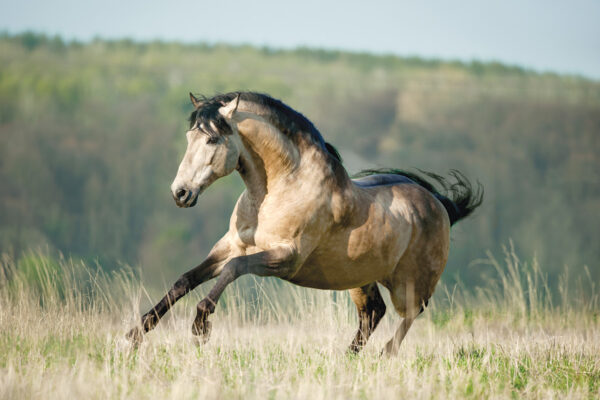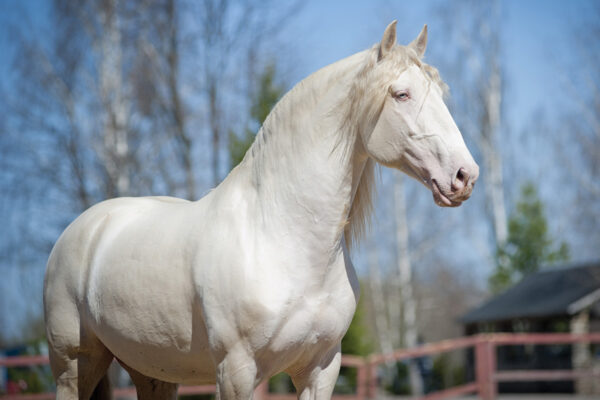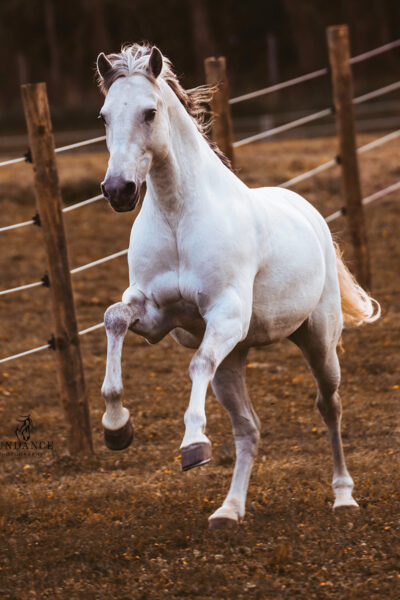
Take a look at a map of Europe and you’ll see a portion of land in the southwest that almost touches Africa. That region—containing the countries Spain and Portugal, called the Iberian Peninsula—is serious horse territory!
The impressive Lusitano has its roots in this region. In fact, horses have inhabited the Iberian Peninsula for many thousands of years, and people have been interacting with them for almost as long. Caves in this area show ancient paintings of horses, and there is archeological evidence of human and horse interactions, as well. The Lusitano is likely among the first horse breeds in the world to be used by humans for riding.
The Lusitano At a Glance
◆ Color: Commonly found in gray and bay, although they can also be black, chestnut, buckskin, palomino, and other colors.
◆ Height: Generally 15-16+ hands.
◆ Association: International Andalusian and Lusitano Horse Association

A Prized Performance Horse
The Lusitano’s long history as a riding horse means that it has served many different roles over time. Prized by ancient Greeks, the Lusitano has also been a mount for medieval knights, the horse of choice for kings, a war horse for William the Conqueror, a cavalry steed, a horse for mounted bullfighting, a Grand Prix show jumping star, and a champion at top-level dressage. Today’s Lusitano is a versatile breed that excels in a variety of disciplines, including driving, western and more!
The Lusitano is an attractive horse that stands about 15 to 16 hands tall, with an arching neck and a dash of “old-fashioned” equine charm.

Lusitanos are noted for being exceptionally smart horses, easy to train, loyal to their riders and handlers, swift and agile, strong and brave—all attributes that reflect their long and amazing history with humans. These traits are also the reason they are so capable at their modern careers, including dressage.
Akin to Andalusians
Another horse breed from the Iberian Peninsula, the Andalusian, shares many characteristics and similarities with the Lusitano, but they are two distinct breeds. Their stud books separated in 1967 so that Spanish horses are considered Andalusian and Portuguese horses are considered Lusitanos.
While Lusitanos aren’t as common in the U.S. as some other major breeds, they have nonetheless played an important role in the history of equines worldwide.
This article appeared in the Winter 2021 Mini Digital issue of Young Rider magazine. Click here to subscribe!


